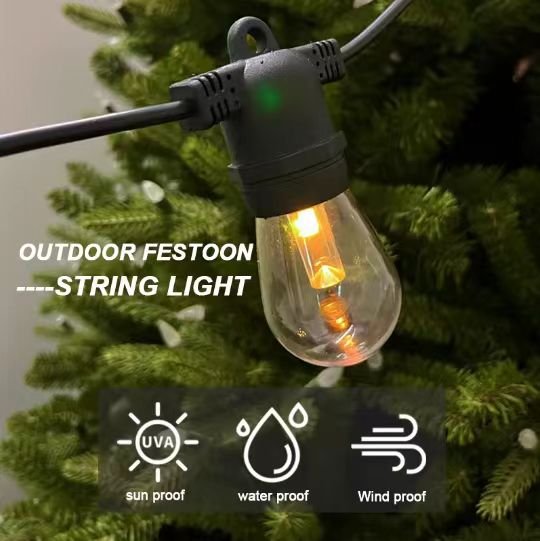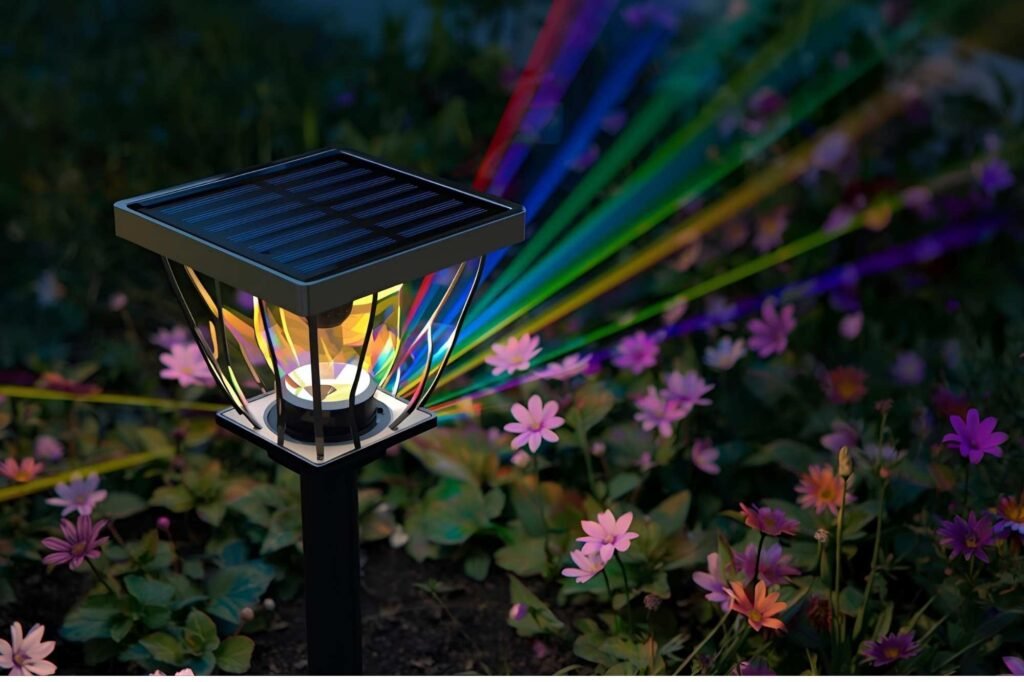Market: United States
Updated: 2025
This guide focuses on diagnosing failures, sourcing compatible parts, and executing reliable repairs on residential and light‑commercial garden lighting systems, including solar heads and low‑voltage lines.
Scope and when replacement beats full swap
For U.S. sites, labor accounts for 40–70% of outdoor lighting service cost. Replacing targeted parts—drivers, LED lamps, lenses, stakes, gaskets, connectors, batteries—can cut total expense by 25–60% while limiting waste. Full fixture replacement is still advisable when housings are cracked, optics are non‑serviceable, or IP integrity cannot be restored.
Ingress protection target: IP65–IP67 for exposed heads
Cold‑weather rating: −20 °C or lower
Common replacement parts and compatibility checks
Optical parts
- Lenses and diffusers: match diameter, thickness, and transmission; frosted polycarbonate reduces sparkle glare on snow.
- Louvers/cowls: verify beam cutoff and fitment to keep source hidden from approach angles.
- Reflectors: confirm beam spread (e.g., 10–25° accent vs. 36° general).
Electrical parts
- LED modules or lamps: align socket type (e.g., S14/E26), CCT 2700–3000K for ambience, CRI ≥90 for foliage accuracy.
- Drivers: constant current vs. constant voltage; set current within ±5%; ambient rating for enclosures.
- Controls: photocells, PIR sensors, astronomical timers; select surge‑protected models for long runs.
Mechanical and sealing parts
- Gaskets: silicone or EPDM; avoid neoprene in prolonged UV exposure.
- Mounts/stakes/bases: replace bent or brittle PVC; metal spikes resist freeze‑thaw cycles.
- Cable glands and strain relief: maintain IP rating after service.
Step‑by‑step diagnosis before ordering parts
- Visual check: look for water marks, fogged lenses, cracked housings, or vermiculation on powder coat indicating corrosion underfilm.
- Measure voltage: at transformer tap (for 12V systems) and at farthest run; keep drop under 10%. A reading below 10.8V at the last head often signals undersized cable or too many fixtures.
- Isolate loads: disconnect suspect heads; if breaker trips cease, suspect driver or shorted splice.
- Thermal assessment: discoloration or crazed lenses imply over‑wattage lamps or blocked vents.
- For solar heads: verify panel cleanliness and battery health; cold‑weather capacity of LiFePO4 typically remains 70–80% at 0 °C.
Solar garden light parts: what to match exactly
Solar heads integrate panel, charge control, battery, and LED engine. Replacements must maintain the charging algorithm and enclosure rating. The ShineU S14 decorative lamp exemplifies a winter‑capable approach: 2700K warm white, Ra95 for accurate plant tones, and IP67 sealing for rain and snow exposure. When replacing parts:
- Battery chemistry and capacity: replace LiFePO4 with like‑chemistry and identical nominal voltage; capacity within ±10% preserves controller calibration.
- Charge controller: MPPT preferred for short winter days; verify low‑temperature charging protection.
- Lens and seals: new gasket seating surfaces must be free of burrs; torque fasteners per manufacturer.
Browse current options under Solar Garden Light or the broader garden lights catalog when assemblies are not serviceable.
Bill of materials (BOM) for typical repairs
| Repair scenario | Needed parts | Compatibility notes | Labor estimate |
|---|---|---|---|
| Water‑ingress path light | Lens, silicone gasket kit, dielectric grease, new cable gland | Match lens diameter and bolt pattern; gasket durometer 40–60A | 35–50 min/head |
| Dim or flickering LED module | LED engine or lamp, driver (if CC), thermal pad | Current within ±5%; CCT 2700–3000K; CRI ≥90 | 25–40 min/head |
| Broken stake/base | Metal stake or bollard base, anti‑corrosion fasteners | Verify stem diameter and thread pitch | 15–25 min/head |
| Solar head with short runtime | LiFePO4 battery pack, MPPT controller if failed, new seals | Capacity within ±10%; winter charge protection | 30–45 min/head |
Visual reference: decorative S14 bulb used as a serviceable component

Replacement procedures by system type
Low‑voltage 12V systems
- Kill power at transformer; lockout/tagout on commercial panels.
- Document wiring with photos; note tap settings and run lengths.
- Remove head and inspect splice; replace gel‑filled connectors if dry or greened.
- Swap lamp or module; confirm polarity for DC drivers.
- Re‑seal with new gaskets; install drip loop; elevate splice off soil.
- Balance loads across multi‑tap transformer; target end‑of‑run ≥10.8V under load.
Integrated solar heads
- Power down and disconnect battery before opening housing.
- Test panel open‑circuit voltage in full sun; compare to spec.
- Replace LiFePO4 pack; verify BMS connections and insulation.
- Check charge controller for corrosion; replace if pitted or burned.
- Reassemble with IP67 seals; torque evenly; perform rain‑spray test (per IEC 60529).
Professional data chart: failure drivers versus environment
Testing and verification checklist
- Insulation resistance on underground runs after repairs.
- Voltage under load at first and last fixtures; adjust taps to center 11.5–12.5V at mid‑run.
- Photometric sanity check: target 0.5–2.0 fc on residential paths with ≤10:1 uniformity.
- Ingress test: 5‑minute spray at 30–50 kPa; inspect for fogging.
- Functional schedule: sunset to 22:00 at 100%, then 40–60% to sunrise.
Procurement: when OEM parts aren’t available
When exact OEM parts are discontinued, select equivalents by matching electrical specifications, photometrics, and environmental ratings. If housings are intact, standardized lamp formats such as S14/E26 simplify future service. For integrated solar heads beyond repair, a full replacement from a current line is preferable.
Explore current assortments in Solar Garden Light and the full garden lights category.
Cost and time model for U.S. winter maintenance (per 12‑fixture path)
| Scenario | Parts cost (USD) | Labor (hrs) | Expected life gained |
|---|---|---|---|
| Gasket + lens refresh | $9–$18 per head | 0.6–0.9 | 18–30 months |
| Driver + lamp upgrade (CRI ≥90) | $22–$45 per head | 0.5–0.8 | 3–5 years |
| Solar battery pack (LiFePO4) | $16–$35 per head | 0.5–0.75 | 2–4 years |
| Stake/base replacement | $6–$12 per head | 0.25–0.4 | Structural reset |
| Estimates reflect contractor pricing in 2024–2025 and typical suburban sites; adjust for travel and permitting. | |||
Frequently asked questions
Citations and further reading
- U.S. DOE Solid‑State Lighting program — outdoor SSL reliability and environmental stressors: https://www.energy.gov/eere/ssl/
- Illuminating Engineering Society (IES) recommendations for residential outdoor lighting (LP‑2, RP‑8 excerpts): https://ies.org/
- NREL NSRDB — winter solar resource patterns relevant to solar garden lights: https://nsrdb.nrel.gov/
- EIA — U.S. retail electricity price context for maintenance decisions: https://www.eia.gov/
This article synthesizes publicly available guidance and field practices, and cross‑checks current product types listed under ShineU categories: Solar Garden Light and garden lights.


